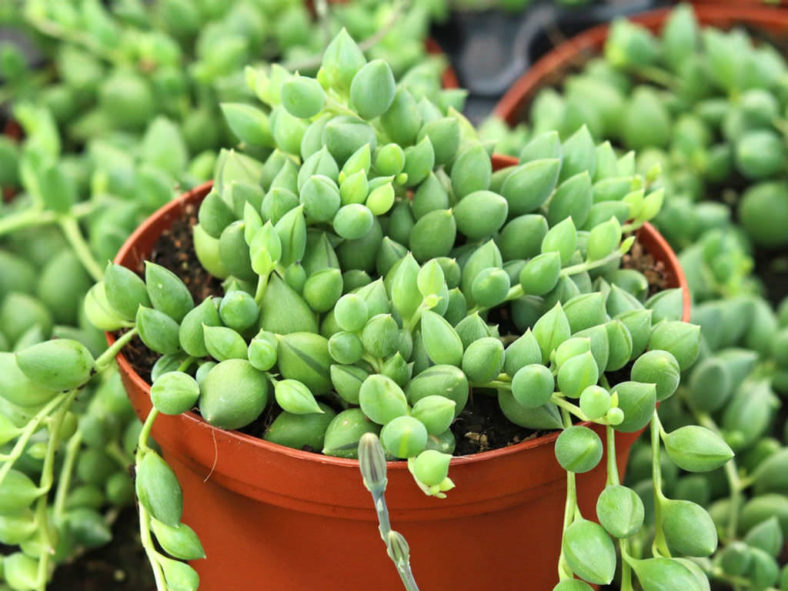Curio is a newly described genus of about 20 succulent plants native to South Africa. It is a part of the Daisy family, Asteraceae, one of the largest families of flowering plants with about 24,000 species found worldwide.
The genus was established by Heath in 1997 for a group of succulents previously belonging to Senecio. The characteristics he used to separate Curio from Senecio are the evergreen nature, elongated striated succulent leaves, and discoid flower heads lacking ray florets.
There are different forms to explore in this group of plants, including low-growing, ground cover types, and the trailing cascades of String Succulents.
The generic name "Curio" derives from the Latin "curiosus," meaning "curious," and probably refers to the peculiar morphology of these plants.
Growing Conditions for Curio
Light
Keep Curio plants in partial shade outdoors, where they prefer in summer, and in bright sunlight indoors. Avoid intense afternoon sun in summer. They will grow in full shade but will become lank and leggy.

Soil
These plants prefer well-draining soil. For growing Curio indoors, using a container with at least one drainage hole at the bottom is essential.
Temperature
Curio plants are cold-hardy down to USDA hardiness zone 9a, 20°F (-6.7°C), but will not survive consistent temperatures below freezing.
General Care for Curio
These succulents are grown more for their beautiful foliage than for their flowers. They look good year-round and require minimal care and attention.
Watering
Water regularly during the growing season, allowing the soil to dry out between waterings. Curio plants are drought-tolerant, but the soil should never be left dry for too long. Reduce watering frequency during winter; water only if the soil is completely dry.
Fertilizing
The members of this genus can take a bit more fertilizer than other succulents if you want them to grow fast. Feed the plants once a year, in summer, with a dilute solution of a balanced, water-soluble fertilizer.
Repotting
You do not need to repot Curio plants often. You can do it when the container becomes too small or shallow.
How to Propagate Curio
Curio plants can be grown from seeds or cuttings.
Seeds
Seeds need warm temperatures and constant moisture to germinate. Depending on your growing environment, germination can take several weeks or longer.
Cuttings
Curio plants can also be grown from cuttings taken during the spring and summer. Root the cuttings in a container filled with well-draining soil, placed in a warm, sunny position. They can be planted in situ, but should be watered at least until well-rooted. Rooting should begin within three weeks.
Pests and Diseases of Curio
Although Curio plants are not bothered by many pests, they can be affected by scale and mealybugs.
Toxicity of Curio
Curio plants are toxic. Grow them with great care if you have children, pets, or livestock. Wear gloves when working with these succulents, as the sap can cause severe skin irritation.
Links
- Back to genus Curio
- Succupedia: Browse succulents by Scientific Name, Common Name, Genus, Family, USDA Hardiness Zone, Origin, or cacti by Genus